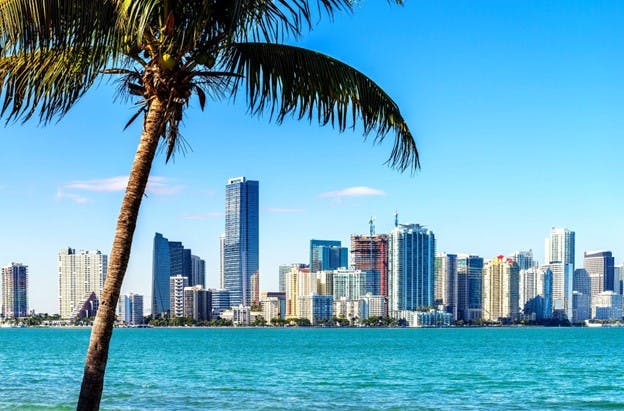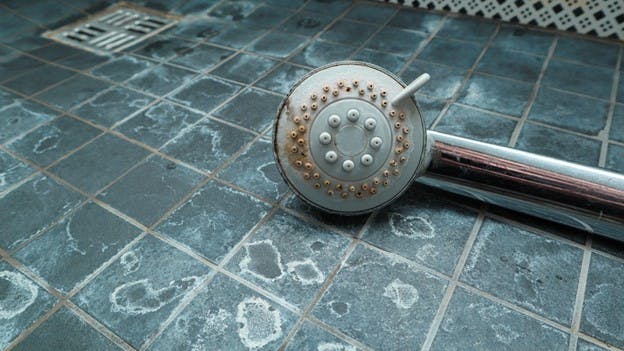🌟 New Arrival! Upgrade Your Water with Our Advanced Pitcher Filter. Shop Now
May 2023
Is Miami Water Quality Safe? A Drinking Water Contaminant Guide
Miami has some of the best art, beaches, night life, and food (oh the food!) you will find anywhere. Geographically, you don’t get much better than Miami either. It borders two national parks and one of the most beautiful coasts in the world. It’s a cultural centerpiece pressed into the far corner of the United States.
After recently being ranked the top city in America for foreign businesses to set up shop in while also being called the next Silicon Valley, this Latin-forward, South Florida jewel seems to have a lot of growing left to do.
But is that prime beach location and uncapped growth starting to become a problem for Miami water quality? In recent years, pollution, storms, and climate change have begun to threaten the prominent water features of the city. This includes wild habitats and Miami’s world-famous beaches. What we are concerned about is the drinking water quality.
In this article we want to explore Miami’s relationship with water, see what cracks might be emerging, and better understand if there’s anything for Miami-Dade County residents to be concerned about.
Where Does Miami Get Its Drinking Water From?
The city of Miami gets most of its drinking water from the rain-fed Biscayne Aquifer. This 4000-square-mile below-ground water supply sits just beneath Miami-Dade County and Fort Lauderdale. The aquifer is very shallow and made mostly of porous limestone and sandstone, which naturally filters the water.
Once there, it flows underground like a river until the Miami-Dade Water and Sewer Department pulls it up out of the ground and sends it on to one of many water treatment plants. The water is then repeatedly tested and given the treatment it needs to bring it into compliance, before delivering it to Miami homes and businesses.
How Is MiamiWater Quality?
When you think of Miami, you probably think of water in some way. Maybe you think of the beaches, swimming, or boating. Maybe you’re a sports fan and the Miami Dolphins or Marlins come to mind. As a coastal town, Miami has always had a unique relationship with water because without water to enjoy, the growth and economy could go awry.
Over the last several years, Miami’s famous beaches have been eroding at a staggering pace and the beloved Biscayne Bay is so polluted that it has become a hazard to swim in. Mass fish kills are even becoming commonplace as the water has become uninhabitable for marine wildlife. Pollution in the bay has destroyed the seagrass and left the water with so little oxygen that fish can’t survive.
On top of that, as sea levels rise and erosion takes place, there’s more danger of Miami’s freshwater sources being contaminated with salt water from the Atlantic Ocean.
While this very real possibility could have a devastating effect on Miami's economy, an even more immediate threat is to the very aquifer that provides fresh drinking water to over 4 million people in and around Miami.
Over 70% of the Biscayne Aquifer is directly beneath urban and agricultural development and in many places the aquifer is so shallow that if you dug a hole a few feet down, you’d hit it.
This makes it very susceptible to contamination from everything from farm and street runoff, to sewage leaks, to overuse of residential lawn care chemicals. Just about anything that touches the ground can cause damage to Miami water quality and create a public health risk if not properly treated.
Is Miami Tap Water Safe to Drink?
Generally, tap water in Miami is considered safe to drink by U.S. Environmental Protection Agency (EPA) standards.
Since the passage of the 1974 Safe Drinking Water Act, the EPA has set a universal standard for all public water suppliers in the U.S. The EPA currently regulates 90 primary contaminants and they add more or adjust them as they see fit.
It should be noted though that there are thousands of chemical compounds in the world that remain unregulated — some of which are even known to be potentially hazardous.
In March 2023, the EPA proposed a legal limit on PFAS and PFOS in water for the first time, even though their biggest manufacturers have been sounding the alarm on them being a health risk for over 20 years already.
If they do pass these new regulations, the D.C.-based water watchdog group, the Environmental Working Group (EWG), points out it will be the first change the EPA makes to water regulations in almost 20 years. Even though our understanding of many contaminants continues to evolve, the regulations have been slow to roll out.
The EWG monitors water testing results and compares them to the latest science for water quality standards. The following is a list of contaminants in Miami water in concentrations that are considered safe by the EPA, but not by the EWG.
Haloacetic Acids (HAA5)
HAA5 is made up of five haloacetic acids: monochloroacetic acid, dichloroacetic acid, trichloroacetic acid, monobromoacetic acid, and dibromoacetic acid. These chemicals are known as disinfectant byproducts, as they result from disinfectants like chlorine interacting with organic matter in water. Long-term exposure to HAA5 can lead to cancer.
Levels of HAA5 in Miami water have exceeded what the EWG recommends for safety by 286 times:
- EPA maximum allowance: 60 parts per billion (ppb)
- EWG recommended maximum: 0.1 ppb
- Miami maximum contaminant level: 28.6 ppb
Haloacetic Acids (HAA9)
HAA9 includes all of the contaminants from HAA5 but adds bromochloroacetic acid, bromodichloroacetic acid, chlorodibromoacetic acid, and tribromoacetic acid. These are also disinfectant byproducts and are also cancer-causing.
Levels of HAA9 in Miami water have exceeded what the EWG recommends for safety by 627 times:
- EPA maximum allowance: No legal limit
- EWG recommended maximum: 0.06 ppb
- Miami maximum contaminant level: 37.6 ppb
Total Trihalomethanes (TTHMs)
TTHMs — like the haloacetic acids above — are formed when chlorine interacts with organic compounds in drinking water. They’re also known to be carcinogenic. This category is made up of four chemicals: chloroform, bromodichloromethane, dibromochloromethane, and bromoform.
Levels of TTHMs in Miami water have exceeded what the EWG recommends for safety by 221 times:
- EPA maximum allowance: 80 ppb
- EWG recommended maximum: 0.15 ppb
- Miami maximum contaminant level: 33.1 ppb
Chromium (Hexavalent)
Chromium is another common contaminant found in U.S. water supplies. It can occur naturally but is also an industrial pollutant. Although it’s known to be a carcinogen, this contaminant is still unregulated by the EPA.
Chromium levels in Miami water have exceeded what the EWG recommends for safety by 4.3 times:
- EPA maximum allowance: No legal limit
- EWG recommended maximum: 0.02 ppb
- Miami maximum detected level: 0.0857 ppb
Arsenic
Arsenic is carcinogenic and is known to cause damage to the brain, central nervous system, skin, and blood vessels. Arsenic is a common contaminant in U.S. public drinking water because it can occur naturally in groundwater.
Arsenic levels in Miami water have exceeded what the EWG recommends for safety by 243 times:
- EPA maximum allowance: 10 ppb
- EWG recommended maximum: 0.004 ppb
- Miami maximum detected level: 0.971 ppb
Radium
Radium is a radioactive heavy metal found both in nature and as a byproduct of oil and gas production. Radium is a known carcinogen. Legal limits for radium are measured in picocuries per liter (pCi/L), which is a measure of radioactivity.
Radium levels in Miami water have exceeded what the EWG recommends for safety by 3.3 times:
- EPA maximum allowance: 5 pCi/L
- EWG recommended maximum: 0.05 pCi/L
- Miami maximum detected level: 0.17 pCi/L
Perfluorooctane sulfonate (PFOS)
PFOS are known as “forever chemicals” because they don’t break down and they accumulate in our bodies over time. These synthetic chemicals are known to cause cancer, endocrine disruption, accelerated puberty, liver and immune system damage, and thyroid changes.
PFOS levels in Miami water have exceeded what the EWG recommends for safety by 7.2 times:
- Proposed EPA maximum allowance: 4 parts per trillion (ppt)
- EWG recommended maximum: 1 ppt
- Miami maximum detected level: 7.17 ppt
Is Miami Water Hard or Soft?
Different areas of Miami have anywhere from hard water to very hard water. Miami relies on groundwater from the Biscayne Aquifer for fresh water. Ground water is usually considered hard water.
Hard water occurs when water passes over rocks and soil and picks up minerals like calcium and magnesium along the way. These small pieces of mineral are like microscopic rocks floating in the water. While there’s no danger for humans to drink water with these mineral solids dissolved in it, you can imagine that a bunch of microscopic rocks in your water could cause problems in your water-using appliances and pipes.
Hard water builds up on surfaces and creates attachment points for bacteria and soap scum to form. It can also damage your clothes, skin, and hair. Hard water also makes your soap less effective so you have to use more of it.
If you’re dealing with hard water, a water softener or salt-free water conditioner can level up your life, especially if you do a lot of the cleaning at home.
Does Miami Add Fluoride to Their Water?
Like most major cities in the U.S., Miami does fluoridate tap water to try to improve oral health. If you would rather not have fluoride in your water, using a reverse osmosiswater filter is a reliable way to remove it. Regular carbon filters or methods like boiling water will not remove fluoride from your water.
How Can You Have the Best-Tasting Water While Living in Miami?
Miami is an amazing city known for beaches, culture, business, and innovation. Unfortunately, storms, climate change, and city growth have put a strain on Miami water quality.
If you have concerns about your water or you just want to make sure you have the best-tasting water possible, HomeWater can help.
Our Upstream 4-Stage Whole Home Water Filter will protect every faucet in your home from contaminants like dirt, rust, chlorine, DPBs, heavy metals, PFOS, microorganisms, and more. Add a water softener to get rid of that hard, South Florida water for good.
Our HomeWater 4 stage reverse osmosis system will provide you bottled quality drinking water that will remove Chromium and Arsenic present in South Florida water.
Or if you’re looking for a simpler solution, our affordable, EZChange 2-Stage Under Sink Water Filter is easy to install, connects to your existing faucet line, and will give you delicious water right from your tap.
You can always find the best products for all your water needs at HomeWater.


